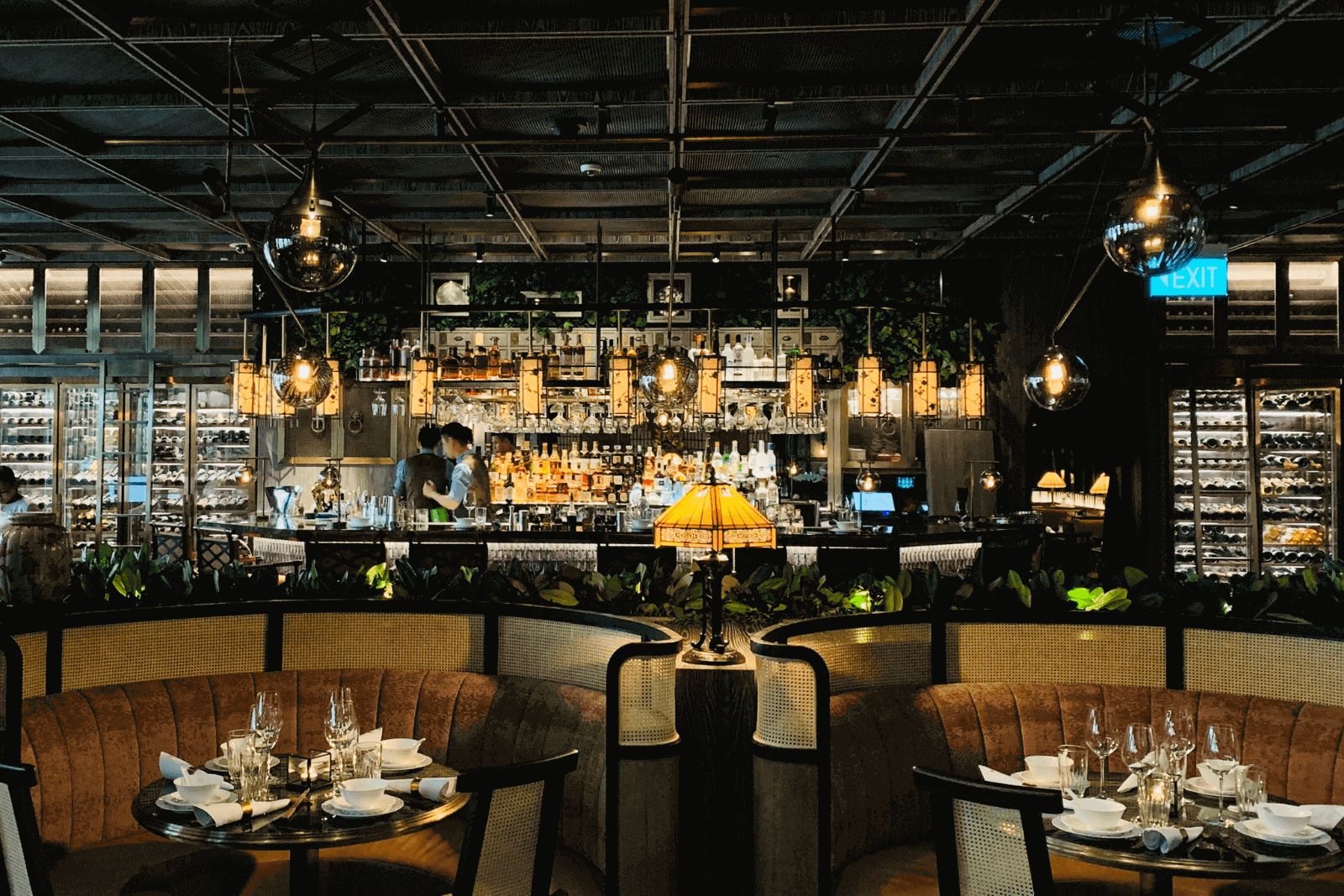Do you want to improve your restaurant’s operational efficiency, maximize table turnover, and enhance your guests’ experience?
Restaurant table management software is the way to do it.
While most tools offer features like online reservations, automated reminders, and customizable floor plans, each stands out with unique specifics—and, of course, pricing.
To help you find the best solution for your needs, we’ll compare the top options available on the market, starting with our own Tablein.
1. Tablein
Whether you’re running a cozy family restaurant, a mid-sized bistro, or even a larger chain, Tablein offers a user-friendly platform that doesn’t compromise on features.
Source: Tablein
At its core, Tablein streamlines your reservation process.
It enables automated bookings with real-time availability updates, ensuring you’ll never double-book a table.
Source: Tablein
Booking widget can be added to your Google profile, and customized to match your branding to ensure a cohesive experience for your guests.
In Tablein, you can also create separate layouts for your floor plan that will be reflected in the booking calendar as dining areas.
You also have control over guest profiles, where you can easily update guest information and even tag guests with labels like VIP, blacklisted, loyal, or food critic.
Source: Tablein
This way, you can offer a personalized experience for every diner.
Moreover, you can secure reservations by requesting a deposit or using card authentication, and keep your staff and guests informed with automated email and SMS notifications.
Source: Tablein
Tablein even includes free marketing tools within the system to help you attract new customers.
On top of all these key features that any table management software should have, Tablein also has robust reporting and analytics capabilities.
For example, you can easily get statistics into your total number of guests, no-shows, cancellations, or first-time visitors over the period.
Source: Tablein
Such insights can help you improve your restaurant management.
You can use the platform as a desktop version or a mobile one. Although Tablein doesn’t have a dedicated mobile app, it does offer mobile functionality.
The software’s pricing is flexible and straightforward.
We offer three subscription plans, which you can see below:
Source: Tablein
The Growth plan includes all features and 150 reservations per month, after which a small fee of 0.37 EUR applies per reservation.
The Success plan provides unlimited reservations, making it ideal for higher-volume restaurants.
Additionally, there are no long-term contracts—you can cancel anytime.
Compared to other tools we will mention today, Tablein prioritizes simplicity and affordability.
While it’s a great choice for smaller establishments, its rich feature set and upcoming updates, like a real-time reservation notifications center and a POS integration, make it equally capable for larger restaurants.
If this sounds like the right solution for you, why not give it a try?
Start with a 14-day free trial, or, as a special treat for our blog readers, enjoy an exclusive 30-day free trial.
Discover how Tablein can transform your reservation management firsthand.
2. OpenTable
OpenTable is one of the most recognizable names in restaurant table management software, known for its global reach and marketing capabilities.
By connecting restaurants to millions of diners worldwide, OpenTable helps restaurant owners attract customers at the exact moment they are searching for dining options.
Source: OpenTable
This expansive network is a significant advantage, especially for businesses looking to grow their visibility.
We do have to mention, though, that Tablein offers something similar through its restaurant guide, but its reach is limited to only a few markets.
Moreover, OpenTable’s comprehensive guest CRM tools allow you to create detailed guest profiles, track spending habits, preferences, and visit history, and generate insightful reports.
Source: G2
OpenTable also integrates with POS systems and other tools, including booking partners, email marketing providers, and others.
Source: OpenTable
This is where OpenTable is more advanced than Tablein. However, Tablein’s integrations with POS, Wallet, and Apple Pay are well on their way.
Additional OpenTable features include custom floor plans, automated table assignments, waitlist management, and in-depth analytics on cover trends, reservation sources, and guest spending.
The system can also help you manage last-minute bookings and prevent overbooking with always up-to-date inventory.
However, OpenTable’s pricing model can be a drawback for many businesses, especially smaller ones.
Although OpenTable comes in three pricing plans, it operates on a commission-based system, charging a fee per reservation made through its platform or affiliate network.
Source: OpenTable
Even in the Basic plan, OpenTable charges an additional $0.25 per cover for reservations made through your website.
Many users note that costs can escalate quickly, especially if you’re unable to direct guests to book directly via your widget.
This makes it less appealing for smaller operations compared to Tablein’s straightforward pricing structure.
All in all, OpenTable is an excellent choice for restaurants with high foot traffic and complex needs, especially those looking to leverage its extensive diner network.
3. Resy
Resy is a table management and restaurant reservation system designed to provide a premium guest experience.
Like OpenTable, Resy also offers a consumer-facing reservation platform, although it operates on a smaller scale.
This tool places a strong emphasis on enhancing guest satisfaction with features like two-way SMS communication.
Source: Resy
One of Resy’s standout features is definitively its partnership with American Express.
Namely, Resy’s collaboration with Amex provides restaurants with access to exclusive dining events and allows them to advertise special occasions to American Express members.
Source: Resy
This partnership also offers customers handpicked dining content, exclusive bookings, and preferred seating arrangements.
Resy’s other notable features include:
- Waitlist management
- Customizable floor plans
- Integration with POS systems
- Fully functional mobile app
Like most other tools on our list, Resy also provides analytics and reporting tools that enable restaurants to track performance metrics and gather insights on guest preferences.
Additionally, Resy’s customizable post-meal surveys help you collect feedback to enhance the guest experience further.
Resy offers a tiered pricing structure with three plans that cater to different restaurant needs.
Source: Resy
Also, Resy doesn’t charge any additional fees per reservation, compared to OpenTable.
And if we compare Resy to Tablein, it’s clear that the two serve slightly different markets.
Resy targets higher-end dining establishments that aim to provide a luxury experience, while Tablein focuses on being an accessible yet robust solution for a broader range of restaurant types.
So, if your priority is creating an exclusive and premium guest experience, Resy might be the better fit.
4. SevenRooms
SevenRooms is an all-in-one CRM, marketing, and operations platform.
With in-depth guest profiles, loyalty programs, and marketing automation, SevenRooms’ main idea is to help you understand your guests, build stronger relationships, and deliver highly personalized experiences.
With 360° guest profiles, for example, you can track everything from allergies to spending habits.
Source: SevenRooms
These profiles are updated in real-time thanks to integrations with over 65 POS systems, allowing you to attach order history and spending data directly to each guest’s record.
Then, when an important guest arrives, alerts and push notifications will be sent to your staff.
Source: SevenRooms
What’s more, in SevenRooms, you can give your most loyal guests access to a private SMS line they can text for bookings or questions.
Source: SevenRooms
This feature is very similar to Resy’s two-way SMS communication.
Another SevenRooms’ standout feature is its AI-driven seating algorithm, which evaluates over 10,000 combinations per second to optimize table assignments.
Source: SevenRooms
Additionally, SevenRooms offers predictive waitlists that guests can track in real time, and reduce the burden on front-of-house staff.
SevenRooms also focuses on helping restaurants drive direct bookings.
By integrating an online ordering system with POS and other tech tools, the platform reduces reliance on third-party marketplaces and enables restaurants to manage delivery, pickup, and on-premise dining orders all from one central place.
It’s particularly well-suited for multi-location businesses because of this centralized control and analytics. With these capabilities, business owners can streamline operations across chains or groups.
While SevenRooms is incredibly comprehensive, it’s also challenging to navigate due to its extensive feature set.
Occasional glitches, such as issues with Google integration, have also been reported by users:
“Additionally, I’ve noticed that the Google integration seems to be glitching more frequently, and we’ve had to report several bugs for fixes.”
Compared to Tablein, SevenRooms offers a more holistic approach to restaurant management.
While Tablein focuses on reservations and table turnover, SevenRooms goes deeper into CRM and marketing automation.
This makes it a better fit for larger groups or chains that require a unified platform for managing multiple aspects of their operations.
Pricing-wise, SevenRooms does not disclose its fees publicly, but according to Capterra, its plans start at $499 per month.
A free trial is also available.
5. Eat App
This software combines advanced functionality with affordability, making it an attractive choice for a wide range of restaurants.
EatApp provides a comprehensive view of weekly availability, including shifts, events, blocked hours, and waitlists.
The platform simplifies scheduling by letting you edit availability settings and visualize your venue’s hourly schedule for the entire week.
Source: Eat App
One of Eat App’s standout features is its customizable floor plan.
Unlike other software, Eat App allows restaurants to upload real floorplan images on both iPad and web versions.
These images appear behind your tables, creating a digital layout that mirrors your physical space.
Source: G2
The platform also leverages AI-powered recommendations to optimize seating assignments and reduce wait times—a feature still in development on Tablein.
Here is a brief overview of more Eat App’s features:
However, Eat App also has some limitations.
As one reviewer on G2 explains, unless you purchase specific add-ons, you can’t view the sources of your reservations (e.g., Instagram, Facebook, or TikTok), making marketing campaign validation more challenging.
Pricing-wise, Eat App offers three plans, including a free option.
Source: Eat App
However, the free plan includes only up to 30 reservations per month and excludes many features.
Be advised that Eat App has many add-ons that need to be paid separately.
Customizing the booking widget to match your brand, for instance, costs an extra $19 per month unless you’re on their Pro plan.
While these additional costs can add up, customers generally find Eat App’s features worth the price.
Comparing it to other software on this list, Eat App balances Tablein’s simplicity and the robust complexity of tools like SevenRooms and OpenTable.
Conclusion
By reading through these descriptions, you’ve likely started picturing how you could improve your restaurant’s operations and satisfy your guests.
Now, it’s time to evaluate your priorities—whether it’s simplifying reservations and table management or expanding your visibility with stronger marketing efforts.
Tablein stands out as a simple and budget-friendly option suitable for small to medium-sized restaurants.
Yet, its rich features and upcoming updates make it equally capable of meeting the demands of larger establishments and chains.
Meanwhile, OpenTable, Resy, SevenRooms, and Eat App cater to larger establishments or niche needs with their specialized features.
Whichever tool you choose, the right software will help you achieve your goals and create the dining experience you envision!
Get a 30-day Exclusive Trial
As a Tablein blog reader, you’re eligible for an exclusive 30-day free trial to experience our simple reservation solution for your restaurant.
Enter your business email, and we’ll send you all the steps needed to create your account.
Share this
You may also like

7 Restaurant Automation Systems You Need to Know About

Top 7 Online Reservation Systems for Restaurants
